Last Updated on November 12, 2015 by Steve Hogg
PERSPECTIVES ON FITTING
There are 3 general strains to bike fitting. Formula, Indirect Observation and Direct Observation. This post has 2 aims. Firstly, to explain what I see as the differences between the three general philosophies, and secondly, to explore the personal fitting approaches of 5 fitters that I have time for. I have also asked each of the 5 to throw in a bit of history about themselves and how they came to bike fitting. Greg Choat, Jerry Gerlich and Scherrit Knoesen, I have met. Scherrit has also spent time training with us.(Since this post was published so has Jerry Gerlich). Tim Gresh, I haven’t met, but he and and I have been talking for so long I feel as though I know him. Mike Kohm and I haven’t met either, but we talk from time to time and he always makes sense to me. Each of these people have different methods and equipment but share the common quality of not having a blinkered, one approach fits all way of going about their task. If you are considering a professional bike fit, all that matters is the result, not the detail of the process.
Formula fitting is the least effective approach because the outcome is largely predetermined with the rider only incidental to the process. Typical signs of Formula Fitting are the use of goniometers (joint angle measuring devices) and plumb lines. These are used to push the rider into a position that has very little to do with the rider’s individual make up and very much to do with achieving predetermined averages or “recommended ranges”. “Recommended range of bend of the knee at the bottom of the pedal stroke” / “Recommended range of angle of upper leg to torso” / “Recommended angle of torso to upper arm” and “Recommended distance of knee over / behind or in front of pedal axle” are all language typical of fitters using formula methods, The angles suggested may vary depending on the formula being applied.
Some formula fitting methods even have the hide to call this Dynamic Fitting; which would be good for a laugh except that it’s a bit sad. I’ve never yet come across anyone who can use a goniometer or a plumb line on a leg while the rider is pedalling. Some how if the rider has to stop pedaling to be quantified, that still equals ‘dynamic’. If you are average across a number of parameters then a formula fit (they are never called formula fits) will yield an average result. For the large majority who are not ‘average’ in each of the large number of parameters of position that should be tackled during a fit, or for those with issues of asymmetry or injury, a formula fit will yield a below average result. I hope anyone spending money on a bike fit is seeking more than an average result. I would encourage all to seek an excellent result. To sum up, Formula Fitting is more akin to process work than bike fitting as I understand the term. Formula fitting is easily taught and easily learned because not much thinking is necessary on the part of the fitter. A couple of days familiarisation and the newly minted formula fitter is ready to roll and apply a process with scant regard for individual differences displayed by clients.
All bike fitters have to start somewhere and because of the prevalence of Formula Fitting methods in the marketplace, this is where most people interested in fitting start. The good ones quickly realise the shortcomings and move on to one of the other camps. Sadly, because of lack of interest or imagination, many don’t and stay in the FF rut forever.
Serious bike fitting is diverging into 2 basic philosophies; Indirect Observation and Direct Observation. There are pros and cons to both and I will attempt to explain them. Before getting to that, a quality bike fit experience should include a Client Interview and Functional Assessment before the rider goes anywhere near their bike.
The purpose of the Client Interview is to clarify in the fitter’s mind what the clients perceptions of their issues and abilities are; why they have come to see the fitter; what hurts or irritates while riding; what their cycling aspirations are; the history of their involvement in cycling; other exercise involvement, diet, general health, injury and surgical histories; allergies and more. This is common to both philosophies with any fitter who takes their job seriously. Some do, some don’t.
The purpose of the Functional Assessment is to determine the range of motion of major joints and the symmetry and stability of the client. In short to find out what the client can and cannot do and if they can’t, why they can’t. If the fitter is of neurological bent, then the client will also be assessed to determine various aspects of neural function as well, particularly with regard to proprioceptive feedback. My own view is that this last is extremely important. If neural function isn’t ideal, and if the motor control centres of the brain are not receiving information loudly and clearly from the parts of the body involved in applying force to the pedals, nothing else will work as well as it could or should.
Every client is different and while there are several major ‘themes’, a comprehensive Functional Assessment should allow a competent bike fitter to predict the asymmetries of technique the rider will display on the bike with a reasonable degree of accuracy, before the client mounts their bike.
What happens once the rider mounts their bike is where the paths diverge.
I’ll attempt to explain the differences between the Indirect Observation and Direct Observation philosophies of fitting as I see them.
Indirect Observation: occurs when a fitter uses motion capture or video capture technology to assess the quality of technique and position of the client cycling. Video Capture fitting is when the fitter uses footage recorded by a video camera to determine what the rider is doing on their bike. Fitting using Motion Capture is when the fitter uses a camera, often a 3D camera, to generate a stick figure representation of the rider and what they are doing on the bike. From my point of view, both are impressive technologies but fitters using them often fall into two potential traps.
The first is that the informational assessment of the rider is often limited to what the technology shows the fitter and frankly, this isn’t a lot. Nothing I’ve seen to date even considers the rear view of what the pelvis is doing. This strikes me as a major oversight because the key to understanding why each leg is working differently (which is often the case) is to be found in the rear view of the client, by observing how symmetrically the pelvis is or isn’t functioning. One brand of video capture only looks at one side and the front view of the rider. The over reliance on Video Capture or Motion Capture equipment is a more or less an admission that the fitter hasn’t yet developed the requisite observational skills to understand what they are looking at directly. If they did it is unlikely they would need or use the technology. I’m not too concerned about this as every fitter has to start their career path somewhere and Indirect Observation via technology is a valid starting point.
The second and major issue is that for far too many fitters it is also the end point. Many who start off down the Indirect Observation route never outgrow the technological crutch they have purchased. The lower skilled ones become Formula Fitters in that they adhere to the ‘averages’ of Formula Fitting but have added the techno wow factor of motion or video capture to their presentation before sticking to the same “recommended range of knee angle at bottom of pedal stroke” type methodology that characterises Formula Fitting. Most people like seeing themselves on video and for a short time at least, the client is overwhelmed with the feeling of “Technology! Must be good!” For those who haven’t seen it before, it is impressive at first glance.
The better quality Indirect Observation Fitters are those who are interested enough in their task to have learned that individual responses to any challenge to position are just that, individual, and can’t necessarily be solved by ‘getting the numbers right’.
The really high quality Indirect Observation fitters aren’t really in that camp any more. They are the ones who have developed superior observation skills over time and tend to rely less on the technology and more on their own perceptions, observations and judgments. They have already become Direct Observation fitters, whether they think of themselves in that way or not.
Direct Observation: occurs when a fitter with a trained eye uses visual cues displayed by the client to assess the quality of the technique and position of their client on their bike. Often this will change under load so periodic changes in resistance are part of the process.The human eye has far more resolution than any video or motion capture camera, just as the human brain is a finer means of working out root cause problems regarding aberrant motion while cycling than any technology yet available. The inherent problem for the client is that they are completely reliant on the skill of the fitter. There is no technological buffer. And this can be a problem because it takes a long time, much experience and some degree of natural aptitude for the fitter to make sense of what they see. No one is born with these skills. They can only be developed, either solo or through instruction.
As a declaration of interest, I’m firmly in the Direct Observation camp. I think some of the technology available for Indirect Observation is terrific but feel that in terms of potential, the surface is only being lightly scratched. Who knows what the future holds?
So where does this leave the potential bike fit client in terms of choosing a quality fitter and finding the process of a bike fit positive?
Here’s a few suggestions that will sort the wheat from the chaff fairly quickly.
1. Ignore fitters who’s advertising places greater emphasis their ‘system’ or ‘technology’ or ‘certifications’ (often multiple) than their skills and experience. Some of the technology and branding out there is high profile and marketed well. If the fitter feels they need to rely on their school of training or brand of tooling more than their track record and abilities, you, the potential customer are likely walking into a poor experience. As an analogy, did anyone ever see a surgeon advertise the brand of scalpel they use?
Did anyone ever see a lawyer advertise what brand of pen or computer they use?
You are purchasing expertise, not tooling or branding and it is well to remember that if you want a good fitting experience. A quality bike fitter will use the tooling they prefer. It might be high tech; it might be low tech; it might be motion or video capture; it might be direct observation; it might be some or all of these things or something in between. What matters; all that matters, is the result
2. Choose fitters who offer a money back if not happy guarantee. 6 weeks post fit, the only person that needs to be happy is the rider, as they are the one that rides their bike. If the rider isn’t happy, then I’m not concerned what the fitter thinks as the rider is right and the fitter is wrong, at least in that particular case. I get an enormous amount of email from people I have never met questioning their fit because they are not happy and the fitters they have chosen have dismissed their complaints with comments like “You are in the recommended range” or “The numbers are right, you’ll get used to it”. These types of comment are all typical of formula fitting; with or without a technological overlay. I’ll say it again, this type of fitting is process work with a predetermined outcome where the client isn’t really part of the process, merely incidental to it. Yet this is what bike fitting is perceived to be by many, both fitters and customers, because it is so prevalent. All bike fitters should view an unhappy customer as a heaven sent opportunity to learn, not as an irritation.
3. Choose fitters who keep detailed records, are willing to answer your questions and explain the ‘why’ of the changes they are making and who will provide subsequent back up as necessary.
4. I get a lot of clients who have been previously fitted elsewhere. Often there are a number of issues that been missed in the previous fit. One entirely avoidable reason for this is that many fitters, because of space constraints or because of the system they have learned, only look at the rider on their bike from one side. If your fitter is only viewing one side of your body, call a halt and go elsewhere.
Some further advice on what to expect post fit.
4. Expect a transitional period of 3 weeks or so, where the changes that have been made to your position may feel strange. During this time, you should ride at no more than 75% of max heart rate and preferably below 70%. You should not ride in fast bunches or climb steep hills. Why?
Repetitive actions like cycling cause the riders nervous system to develop a motor pattern which is simply a muscle firing sequence appropriate for the task. When your position is changed, your motor pattern doesn’t change immediately. It usually takes several weeks. During this time, if you go harder than suggested above you are likely to feel weak and powerless . And you’ll be right because you are firing your muscles out of sync with the demands of the new position. We adapt best and most quickly at low intensity. At higher intensities, we automatically fall back into patterns of motion we are used to, but which post fit, are no longer appropriate. Take it easy. One off aches or pains can safely be ignored. However, if there is any pattern to them of if they become worse ride on ride, consult your fitter. Do not ignore this type of pain or discomfort.
5. Whatever the outcome of your fit, provide feedback, whether good, bad or in between. It is illogical to criticise anyone regarding the outcome of your fit unless you are prepared to give genuine feedback.
Now for some varied perspectives on fitting.
JERRY GERLICH
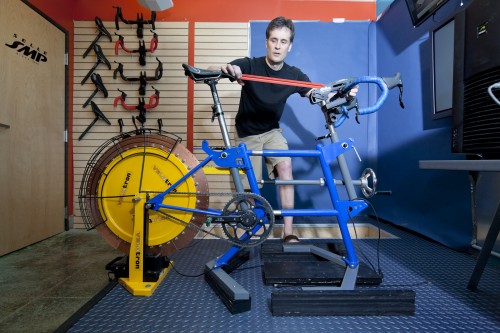
Hello. I’m Jerry Gerlich and I perform bicycle fittings, threshold tests and cover the majority of the sales chores for Castle Hill Cycles in Austin, Texas. My schedule also involves working with gym clients through our state-of-the-art facility, Castle Hill Fitness. I have a bachelor’s degree in Kinesiology from the Universityof Texas in Austin as well as certifications through the American Council on Exercise, the CHEK Institute, Power Plate USA, Sally Edwards Heart Zones Training, Personal Training on the Net and Trigger Point Performance Therapy. My wife, Kelly, and I enjoy the awesome social and physical environment that is Austin, with our boys, Charles and Jackson.
My entry into the bicycle industry happened abruptly in May of 1988. I was attending a music school in Los Angeles in an attempt to make a living as a professional drummer. Jaime Isaacks, whom I was rooming with at the time, rang me at around 11:00 a.m on a Saturday morning with a plea that I come to the bike shop at which he was working immediately. Apparently, one employee quit the night before and another was fired on the spot for stealing, which left Jaime in a bind. He needed a warm body he could trust to answer the phone and make sure products were not walking out the door free of charge. My roughly six hours of work were rewarded with a fast food lunch from across the street. Essentially, I was conscripted into the retail bicycle industry.
By late 1990, I was working at a second store in L.A., I. Martin Imports, as the first store had been sold, dissolving my assistant manager position. Roderick Gilchrist, the manager, had a huge impact on me as a fitter. He was a smart Scotsman with extensive experience in the retail industry. Rod encouraged me to pay attention, ask questions and when in doubt…….ask more questions. He also gave me my first set of stationary rollers to help straighten out my line on the road. I began tagging along on Rod’s sessions because I found them fascinating. We used the typical “Fit Kit” protocol, which I thought was a scientific breakthrough, at least at that time. One day, a client came in when Rod wasn’t around and I was thrown to the “fitting sharks.” The client was leaving town that afternoon with a Campagnolo C-Record equipped, limited edition Cinelli with a matching, hollow, proprietary binder bolt. Like the music business, there is always a first show where not everything goes to plan. The actual fitting went pretty well, but when we decided to tweak the saddle height one last time, it happened. The 5mm key was turning, turning, turning and suddenly…POP! I over tightened and snapped the proprietary, nothing else will fit binder bolt. We ended up discounting the bike by $400.00 to make up for the bolt. Welcome to the world of light weight parts. Now, get a torque wrench!
Previously, while attending music school, I had the honor of studying under several instructors who would inadvertently impact my bike fitting skills. One of those was Doane Perry, the current drummer for the rock group Jethro Tull. Doane helped to simplify/stabilize my drumming techniques. His suggestion to “never work any harder than needed” carried over into the Velotron fitting lab as well as the gym. Essentially, I look for ways to increase efficiency by reducing watts for the same speed.
Our fearless leader at The Castle, Paolo Minissi, has provided me with a Racermate Velotron which we have mated to a Mikkelsen sizing frame as well as other quality fitting and repair tools. The Velotron is a true watts meter that samples data every 7.5 degrees of rotation compared to 15 degrees of rotation provided by the Racermate Computrainer. The Velotron is the gold standard for data capture with regard to speed, watts, Spinscan analysis and torque angles.
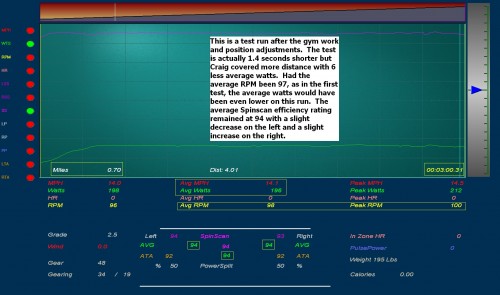 Essentially, I start a session by having the client warm up on a Total Gym type leg sled that requires a squatting type movement under a very low load, maybe 10-15% of the client’s weight. While the client it warming up for 15-20 minutes, I make note of his/her current position measurements. I then load the current position onto the Velotron as closely as possible for a 5-minute baseline test. We choose a gear and rpm that requires ample effort without losing upper-body stability.
Essentially, I start a session by having the client warm up on a Total Gym type leg sled that requires a squatting type movement under a very low load, maybe 10-15% of the client’s weight. While the client it warming up for 15-20 minutes, I make note of his/her current position measurements. I then load the current position onto the Velotron as closely as possible for a 5-minute baseline test. We choose a gear and rpm that requires ample effort without losing upper-body stability.
Once we have the baseline test, the fun begins in the gym. We test mobility, stability and balance in several different ways. I also have the clients perform a few rotation activities on a stability ball to check seated-proprioception. When appropriate, I utilize a Power Plate vibration trainer to increase flexibility, inversion tables to open up the low back and Pilates equipment for basic core work. Once I have an idea as to which muscles are firing, I head toward to opposing muscle groups to wake them up. With the smart phone, we can take before/after photos to see if my suggested activities have produced change.
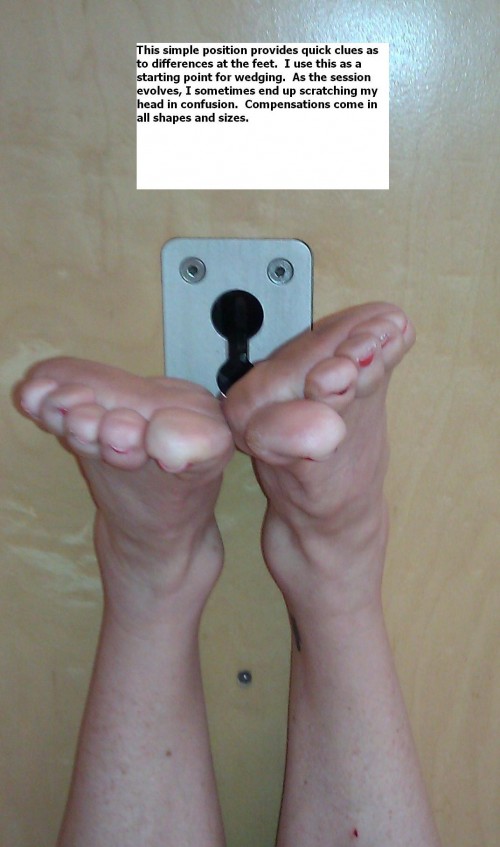
Once all of the physical cylinders are firing, we do an initial cleat setting and run another Velotron test and compare the data. That’s where time starts to evaporate. Each adjustment is followed by a 3-5 minute test.
We adjust, test, analyze, adjust, test, analyze until the efficiency is as high as possible which usually results in lower watts for the same distance. We start with the cleats (sometimes up to an hour on this factor), then work out a saddle position that places the sits bones in the sweet spot of the saddle as squarely as possible with enough height without rocking. Sometimes, the current saddle just does not work which is when we start experimenting with saddles (most often SMP’s). Once we have a saddle position, we organize the bars in a manner to suit his/her needs.
We have cameras mounted on the ceiling for both the Velotron and the client’s bike which is set up in a stationary trainer. The cameras are there to provide the client with views not possible while cycling. They are not used as motion capture devices to determine joint angles. I also move around with the smart phone to capture footage that can be replayed immediately as well as emailed.
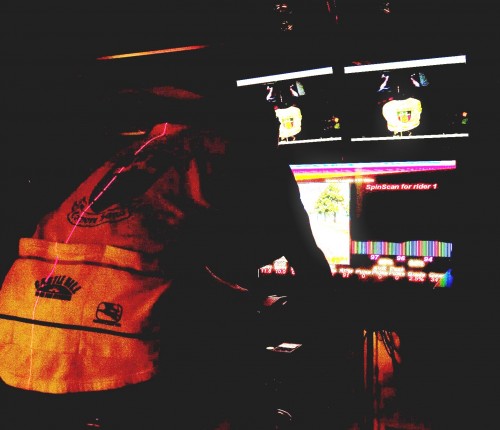
As the years progress, I have found that rules, technology and fitting “gadgets” tend to blur things. My approach is simple. I have the client thoroughly warm up and then operate in his / her current position under a decent load and watch mostly the feet, knees, hips and back. The tricky part is determining how to spread the workload by providing a position with good leverage and above all, comfort.
Jerry Gerlich www.castlehillcycles.com www.castlehillfitness.com
SCHERRIT KNOESEN
I grew up in South Africa and moved to the UK in 2000, I still miss the weather and the people- Steve says I sound like a South African who has swallowed an Englishman. I have been riding road bikes since 1983, and got into road racing shortly after that. It took a few years for me to discover track riding where I eventually found something I had an aptitude for!
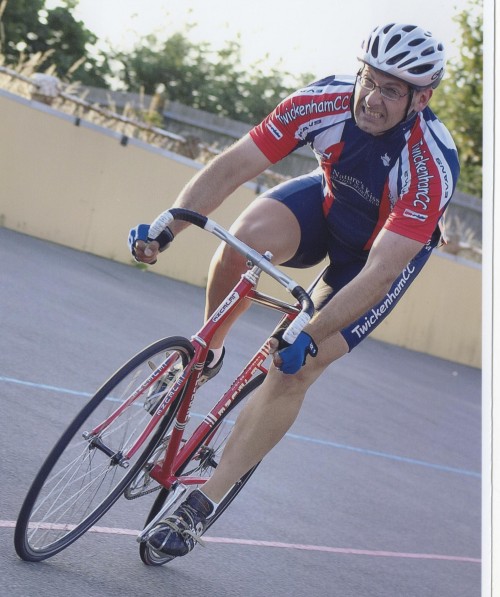
My employment history is best described as highly variable- I have been a truck driver, a forensic analyst and (most recently) narrowly avoided becoming a banker. Instead, Corinne and I decided to take the plunge and opened The Bike Whisperer in 2004. We were both mad about bikes and were spending lot of out free time fixing our buddies bikes and sorting out their fitting problems anyway. We did mostly workshop work at first. We had the skills already and there is massive demand in London for a good mechanic.
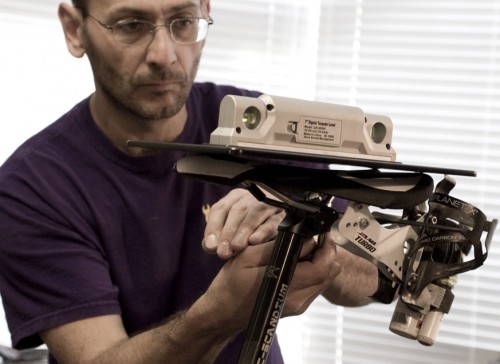
When I started riding, I struggled with biomechanical issues almost straight away. Cranks in those years were straight with no offset to allow your medial malleolus (protruding bone on inside of ankle) to clear the crank if you needed any degree of heel in foot turnout. My shoes had adjustable cleats but many other shoes of the period often had nail-on cleats with no rotational float at all. It’s a wonder we didn’t all end up crippled! I guess it’s a testament to the adaptability of the human body that we managed somehow, and I think there may be some parallels with running. The best runners were the product of some tough Darwinian selection pressure. Those who had the best biomechanics survived the required training load without injury! Those who didn’t fell by the wayside if they attempted the same training load. There are cycling parallels to this.
My fitting philosophy is best summarised using the back versus front of rider approach. The back of rider covers the foot/pedal relationship and saddle position; here my job is to put the rider into a position where they can make the best power for the duration of their event, without damaging themselves. The front of rider covers bar set-up and here my job is to understand and find good workable compromises between the various needs of the rider; to see easily ahead and behind, be aerodynamic as sensibly possible and to be able to breathe at the lowest metabolic cost. It’s always been clear that suboptimal “back” set-up can make a rider slow but it’s taken more time for understanding about breathing economy to percolate through to the average rider’s notice.
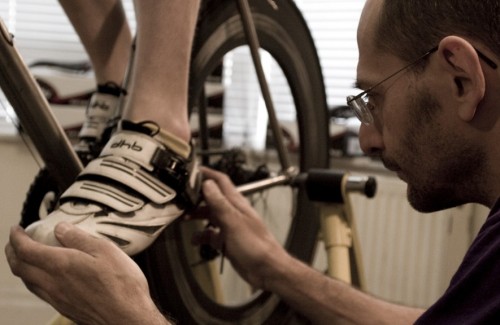
Compared to most other fitters that I’m told about by my mostly UK based clients, I focus more on feet. I find that once feet are properly positioned the rest of the fitting seems straight forward by comparison. Of course , as with any generalisation, there is a client waiting out there to prove me oh so wrong! One of the hardest but also most rewarding things about working as a bike fitter, is that you can never know it all, nor can you have seen it all. What you can do is to constantly improve by accumulating experience and diligently making sense of all you’ve seen by reading widely and learning as much as possible from any area of knowledge even vaguely related to bike fitting and biomechanics. In this regard I owe Steve a lot in terms of his systematising some things that I had vaguely thought about regarding symmetry, and also in developing his patent pending approach to getting the feet properly set up.
Scherrit Knoesen www.thebikewhisperer.co.uk
MIKE KOHM
Writing regarding one’s own career is a bit surreal; time flies by; experience accumulates and then you are doing bike fits! Twenty-four years ago I earned a Kinesiology degree at the University of Colorado/Boulder by working at a local bike shop, “The High Wheeler.” Bike Fitting was a “Fit Kit” and I observed riders who were having pain on the bike become a lot more comfortable and efficient. Eventually Physical Therapy school ensued and I began to work in Orthopedics and started to take courses in Manual Therapy.
My name is Mike Kohm PT, BS and I have taken over 30 Physical Therapy courses in my career and have 17 years of clinical physical therapy experience. My path has been a bit eclectic, a yoga certification, teaching trigger point dry needling for Kinetacore and obtaining a functional movement certification www.functionalmovement.com/fms .
I have had the good fortune to take level 1 & 2 in the Selective Functional Movement Assessment (SFMA) series from Gray Cook PT, M.S., OCS, CSCS and Kyle Kiesel, PhD, PT, ATC, CSCS. The central theme of my philosophy as a physiotherapist, is that as human beings we are meant to move and when we stop moving, move poorly on or off the bike, or sit in one place for too long, dysfunctional adaptations occur.
Bike Fitting as part of my physical therapy career began as the Physical Therapist who performed bike fits in our clinic was leaving. I had been through a few bike fits for my cyclocross bike and a mountain bike and was impressed that a few tweaks really improved my comfort level. I expressed interest in learning about fitting and sat in on a few. I was given “Andy Pruitt’s Complete Medical Guide for Cyclists.” I read that cover to cover several times, asked far too many questions and picked up Paul Swift’s “BIKEFIT” guide. Essentially I was thrown to the wolves. A lot more questions began to come up, and as my skill set improved, so did the challenges! My search lead me Steve Hogg’s web site and his articles.
My company, www.neuromuscularstrategies.com is a reflection of the education, clinical experience and the influence of many fine “movement specialists.” My experience as a bike fitter leans toward the realm of “medical bike fits” or simply, pain on the bike. I have also fitted local professional racers, teenagers, and weekend warriors.
If I had a mantra concerning a treatment philosophy, it would be “don’t treat pain.” On a bike, pain is quite often the manifestation of poor biomechanics above or below the involved painful area. Sometimes it is seemingly an unrelated issue such as differing height brake levers that will in turn twist the torso, then the pelvis reacts, which affects the knee. The picture below demonstrates a local professional with uneven brake hoods who had knee pain on the bike as the indirect result.
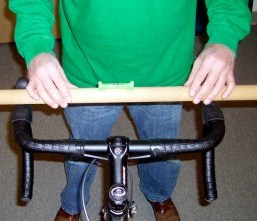
An aspect of bike fitting that often seems to be left out is a client’s flexibility, not only in their musculoskeletal systems, but in their “neural dynamics” as well. I start most fits with a Selective Functional Movement Assessment, address neural dynamics and review a client’s medical background.
Americans seem to be obsessed with aerodynamics and as they age do not have the neural mobility or the flexibility to sit in the same position as when they were 20-25 years old. Many riders present with an unnecessarily aggressive position, with a high seat height, and are “set back” on their saddles. This spring a pro 1-2 rider with lateral knee pain came to the clinic who had had 2-3 previous fits, several renowned orthopedic consults and an MRI which showed a frayed lateral meniscus.
Surgery was recommended, but to her credit she did not feel this would fix her problem. Her neural mobility testing revealed a compromised femoral nerve glide with an extremely tight lateral quadricep and IT band. In summary her bike position consisted of the above with a very aggressive position in the cockpit. This in turn shortened her hip flexor and upper quadriceps which restricted her femoral nerve and tightened her lateral quadricep and Iliotibial band.
She agreed to some trigger point dry needling to release the quadriceps and hip flexors. Her homework was to begin neural mobility training and flexibility. We lowered the seat, flipped and shortened her stem, moved her saddle forward, shimmed her left cleat and she was able to begin riding again. We were both happy she avoided an unnecessary surgery!
Many of the riders I see were fit with a “system” that uses a computer. People who are fit with a system are almost left out of their fit, if that makes sense. The people doing the fits are often trying to fit the rider into a preconceived box and are looking at the rider through their computer not at the bike. The best computers are our brains and observation skills.
Most fits take a minimum of three hours. Iinitially a fair amount of time is spent on foot dynamics and cleat placement. Wedges are often used to help align the foot, knee and the hip. The cleats are our literal connection to the bike, along with the saddle and brake levers. Bar width is assessed to make sure a person is appropriately fitted.
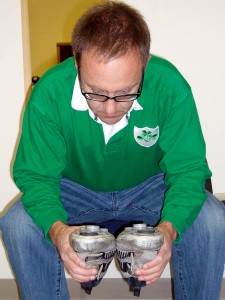
Measurements are taken of the trunk flexion, elbow, knee, and cervical position is noted. The intention is not to fit people into a strict set of limits, but rather to objectively measure how a person is fitted to the bike. This provides a guide on how to begin the fit. Paul Swift’s suggestion of a laser has become an integral part of the bike fit. The laser helps to see how the femur, patella, tibia, ankle and foot all line up during the pedaling action. The laser can be used to align the saddle to the bars.
I am often amazed that when I fit a cyclist who spends 12-20 hours a week on their bike, how close they already have their fit. The extra 2-3 cm of total adjustments on their bike really cleans up their problems. My intuition is that a good bike fit does clean up subtle asymmetries and unloads muscular imbalances. This dials the person into their bike. The nervous system readily reacts to both positive and negative influences. When the body falls into a state of imbalance and then pain, it will alter movement. Dysfunction movement patterns can manifest and these can be magnified on the bike.
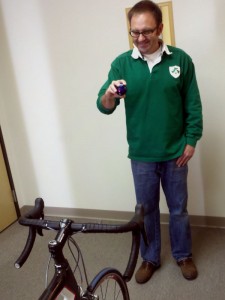
Interestingly, Steve Hogg and Gray Cook PT, M.S., OCS, CSCS share a common philosophy of Vladimir Janda’s MD, DSc “Crossed Syndromes.” Janda was one of the first medical practitioners to study movement patterns and has been a great influence on the world of physiotherapy. Janda quantified the inhibition of and / or over facilitation of muscle groups due to constant postural positions or muscular imbalances. This concept is a large part of what we treat both on and off the bike. The muscular imbalances create joint compression which can lead to pain. When muscular imbalance manifests on a bike, joint compression results and inefficiency and pain are the usual results.
The work of the folks at Functional Movement Systems shows us that athletes and workers with movement asymmetries are 2-3 times more likely to get injured. Most folks who are seeking a fit are “good riders.” They take their bodies through a moderate to sub maximal effort. Racers, of course, perform near their maximum effort. Given cycling is a repetitive motion event, subtle imbalances and asymmetries become bigger problems after an hour or two on the bike.
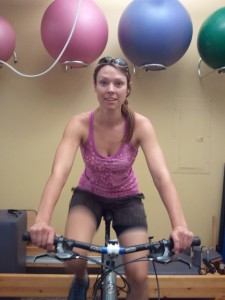
My most successful fits often start with changing the stem to provide the person a more upright position to facilitate breathing, and to open up their hips, so they can drive their bike through the pedal stroke. People become so focused on their aerodynamics that their upper body musculature is working overtime just to hold them up. This compromises their ability to breath. You might look faster on the bike, but guaranteed the inability to obtain as much oxygen will lessen performance every time!
The short story is people do not fit in a box. Two people with nearly the same build are most likely going to have different positions on their bikes because of differing neural dynamics, flexibility, core strength and breathing capacities.
Happy Riding!
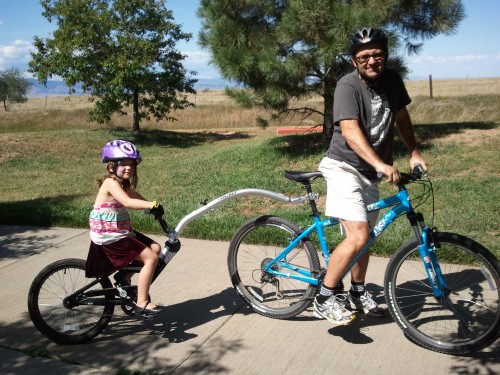
Mike Kohm PT www.neuromuscularstrategies.com
TIM GRESH
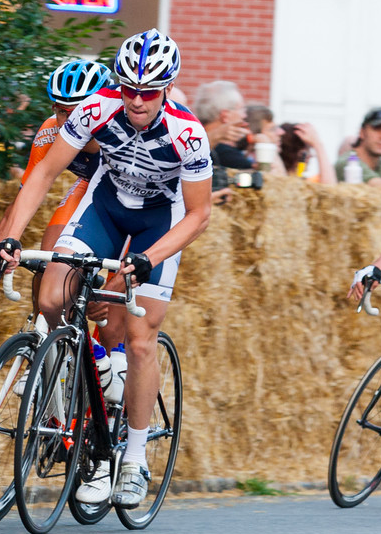
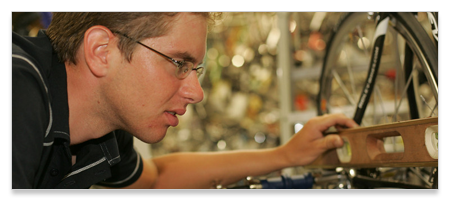
My journey toward becoming a bike fitter began shortly after buying my first road bike and catching the racing “bug” during my sophomore year of high school. Besides impatient motorists and nasty weather, chronic lower back pain was my biggest nemesis out on the road. As a sixteen year old, I naively put up with that pain despite knowing something wasn’t right. After graduating high school, I had no plans for college and was solely interested in racing my bike. Cycling at a higher level was only achievable if I could fix the back pain, so I began investigating solutions with a greater resolve.
At this time, Steve Hogg was already my pen pal, providing guidance and an informed mind to bounce questions off. I began trying different bike positions & methods, while tirelessly seeking the right healthcare professionals. I visited numerous bike fitters and at one point, spent my entire savings on a trip to see Andy Pruitt in Boulder, Colorado. Every attempt made to improve the situation led to little or no result. After surgery on a torn meniscus, along with other injuries related to my various biomechanical misalignments, I was depressed and heartbroken. I had only two options: stop cycling altogether or continue to move forward with the hope of finding a solution. Quitting wasn’t really an option, so I continued to seek answers and convinced myself it was a battle I would win with patience, persistence and increased knowledge.
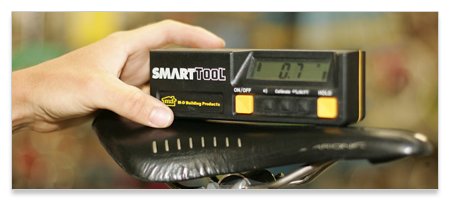
Moving forward, I compiled pieces to the puzzle with adjustments and perspectives from off-the-bike structural health, and Steve Hogg-inspired bike adjustments. This included everything from cleat wedging to laterally offsetting my seat. In 2007, after 3-years of trying, my back pain dissipated and nearly brought me near to tears of happy disbelief. Despite a frustrating battle, I realized the ordeal of seeking solutions was an amazing experience. Just as a dedicated cyclist endures training that leads to conquered goals, my struggle to solve this complex issue led to the purpose of offering others the best bike fit he or she is capable of realizing. I’m now heavily involved in the art and science of bike fitting, and Steve Hogg is still a mentor to me, almost seven years after first writing to him.
While fitting clients, I rely primarily on visual observation to determine position changes, as my own personal “fit issues” were not resolved with a plumb-bob, goniometer or motion capture. Every rider is different, and I’ve never felt comfortable limiting cyclists to pre-determined results. Most perspectives and techniques applied during my fits are based on what Steve has written about publicly over the years. I prefer to observe pedaling style, extension of both legs, hip rocking, knee tracking, foot stability and handlebar reach, all while my client is pedaling under load. It’s extremely important for me to view the rider from ALL viewpoints: front, back, both sides, along with a top/behind view looking down on the back and hips. Based on visual observations from each viewpoint (dynamically and under load), I mentally picture their ideal position “rough draft”. Imagining an ideal position helps lay the groundwork and dictates which adjustments I’ll make first. I always make sure to keep critical parts of various sizes in stock (bars, stems, eSoles, wedges, etc). Clients are encouraged to ask questions and provide updates after seeing me and if things aren’t working quite right, we follow-up in person to address it accordingly. In the experience I’ve had to date, many clients have seats too high, cleats far forward and a need for arch support & wedging. I’m constantly humbled by the complexities of human adaptation to cycling, and strive to create a positive difference to the best of my ability.
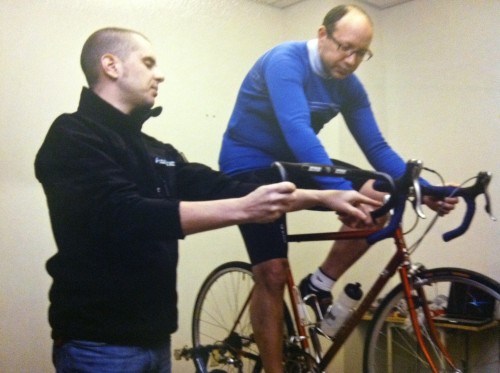
My perspective on bike fitting, in its current state, is like looking at a battle between two worlds: engineering and medical. I’m not an engineer, but know enough to say that it’s an art and science mastered by talented and creative people who push the envelope of technology. Feats of engineering amaze us with lighter, stiffer and more precise cycling gear. I’m not a doctor either, but know enough to say medicine is also an art and science performed by talented people who, above all else, help keep us healthy, and do an amazing job of applying known aspects of human physiology to give positive results. Cycling is driven by the engineering world. I do not see engineering and advances in motion capturing, computer analysis or the like being the next level of bike fitting. The future of fitting will involve significantly greater emphasis on human physiology and function which links body to machine. In other words, I feel rider position is often seen as an engineering problem, not a medical problem. As we further investigate physiology and neurology of rider biomechanics (as Steve maintains in his own philosophy), improved fitting technique and training will be developed.
I hope to see a greater balance between the two worlds in regards to the future of fitting. Steve Hogg stands out as a leader in a movement that’s creating a healthy balance between worlds. The end result will make us all happier and better cyclists. Steve’s blog is a great window into the future and what it means to integrate anatomy and neurology into bike fitting. I feel privileged to be involved in bike fitting and am motivated to be part of what lies ahead!
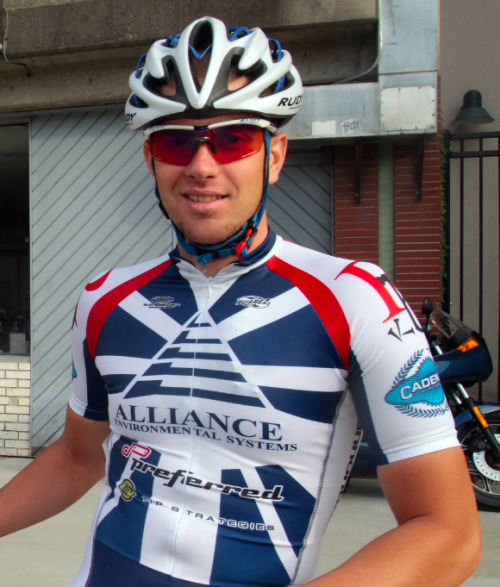
Tim Gresh www.greshfit.com
GREG CHOAT
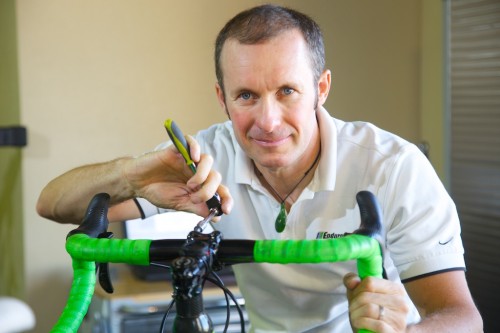
I’m Greg Choat. I was born in New Zealand and have been a competitive athlete for more than 30 years. I started racing bikes at age 11, but at age 13 I turned my attention to badminton. As a badminton player I was a multiple-time New Zealand national champion and I was a member of several New Zealand national teams that competed internationally throughout Asia. In 1990, I retired from badminton and returned to bike racing on the road, track and in mountain bike.
I became interested in bike fitting after suffering a back injury that left me unable to ride a bike for nearly 9 months. Initially, I followed the accepted bike industry fitting protocols, but quickly began to question why things were done the way they were. I investigated WobbleNaught, Cyfac, FitKit, BikeFit, FIST, all the other usual suspects, but found myself with more questions than answers. Eventually I worked out the answers to my issues myself.
My fit philosophy has become one of assessing movement patterns and asymmetries, because, to use a cliche, ‘it’s not about the bike!’ If we have dysfunction in our movement off the bike, we are going to have dysfunction in our movement on the bike because we have 4 points of fixed contact, our hands and our feet. Your body will do whatever it can to work around any shortcomings you have in your movement patterns.
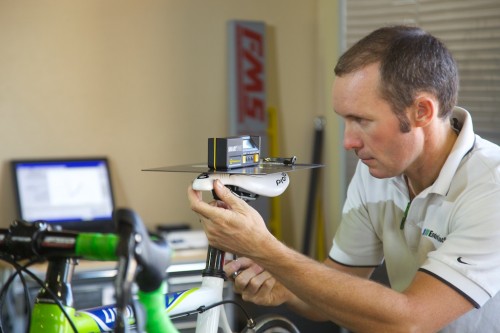
I spend the majority of my time in a fitting session assessing a client’s dysfunction and working on a strategy to correct them. As a Functional Movement Specialist, I use a reliable and repeatable seven step screening process to identify, rate and rank movement limitations and asymmetries. I have learned that if we take a reductionist approach to movement by looking at ranges of motion of individual joint lines or segments we can easily be misled into thinking that movement involving these joints will also be normal. This is often not the case because normal range of motion does not guarantee normal movement patterns when multiple joints are involved.
In movement we can’t ‘zoom in’ on a certain area of the body. That’s not how the body functions. It’s a complex series of actions where the brain must tell the right muscles to move the right joints at the right time, if we wish to perform at our best.
When positioning a rider on a bike, my approach is that the body needs to be in a balanced position to be able to work at its optimum level. If you are balanced on the bike you’ll be able to apply maximum force to the pedals for the minimum effort, allow your respiratory system to work efficiently and control the bike in the most efficient manner. Your riding position is defined by your level of functionality, not a mathematical calculation based on limb length or normalized population data produced by a hi-tech measuring system. If you take two riders with exactly the same morphological dimensions I’d almost guarantee their positions on the bike will not be similar.
People often believe that greater levels of accuracy and technical precision in measurement create better results. Sometimes higher levels of measurement accuracy actually just mean we’ve ‘zoomed in’ on something. It doesn’t mean that we’ve actually focused on the the problem. If innovation in logic does not improve with increased measurement sensitivity, then no real gain has been made.
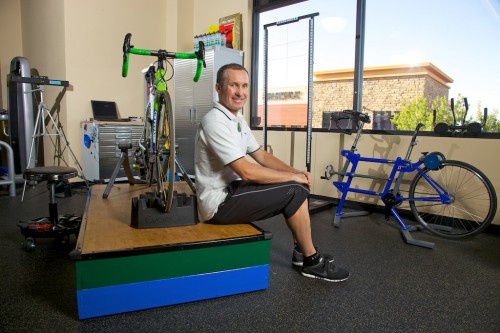
Greg Choat www.endurocoach.com
Note: Often, more specific answers to your questions can be found in the Comments below or in the eBooks section and FAQ page.
To learn more about bike fit products offered by Steve, click here.
Do you have a bike fit success story? Please go here to share.
Thank you for reading, return to the Blog page here or please comment below.Comments (13)
Comments are closed.

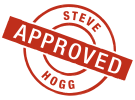
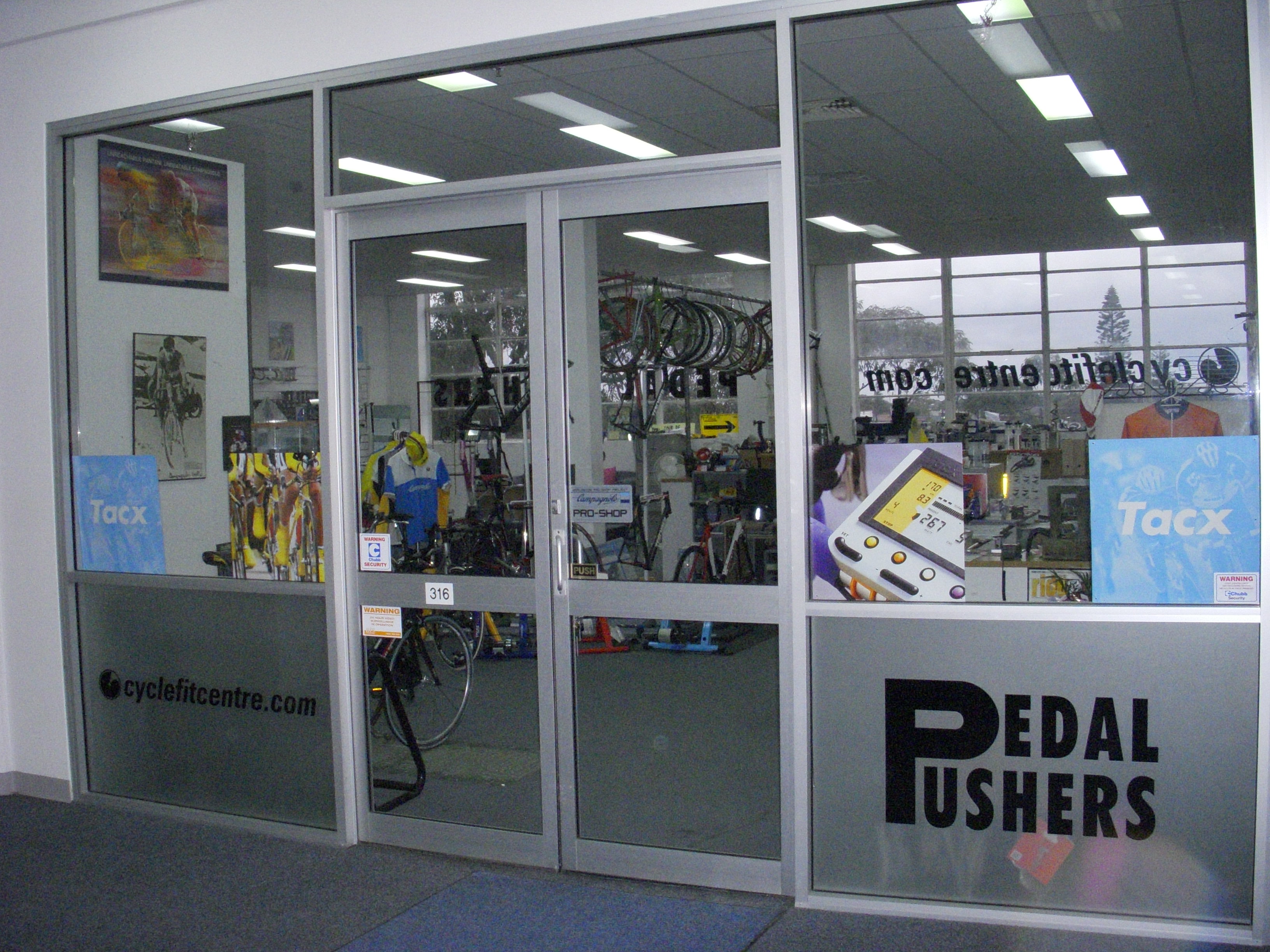
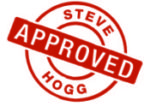
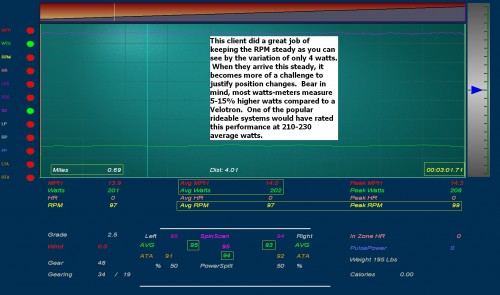
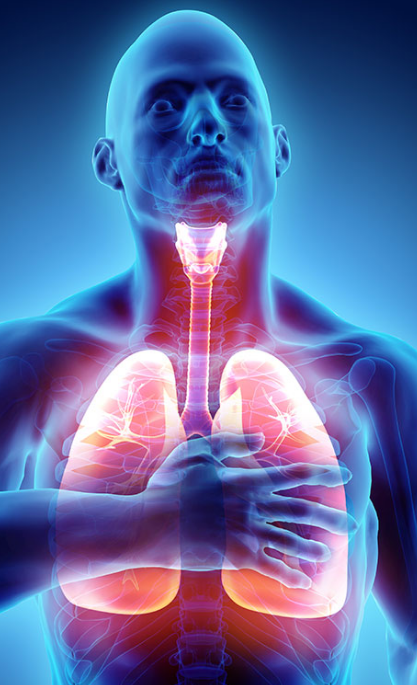
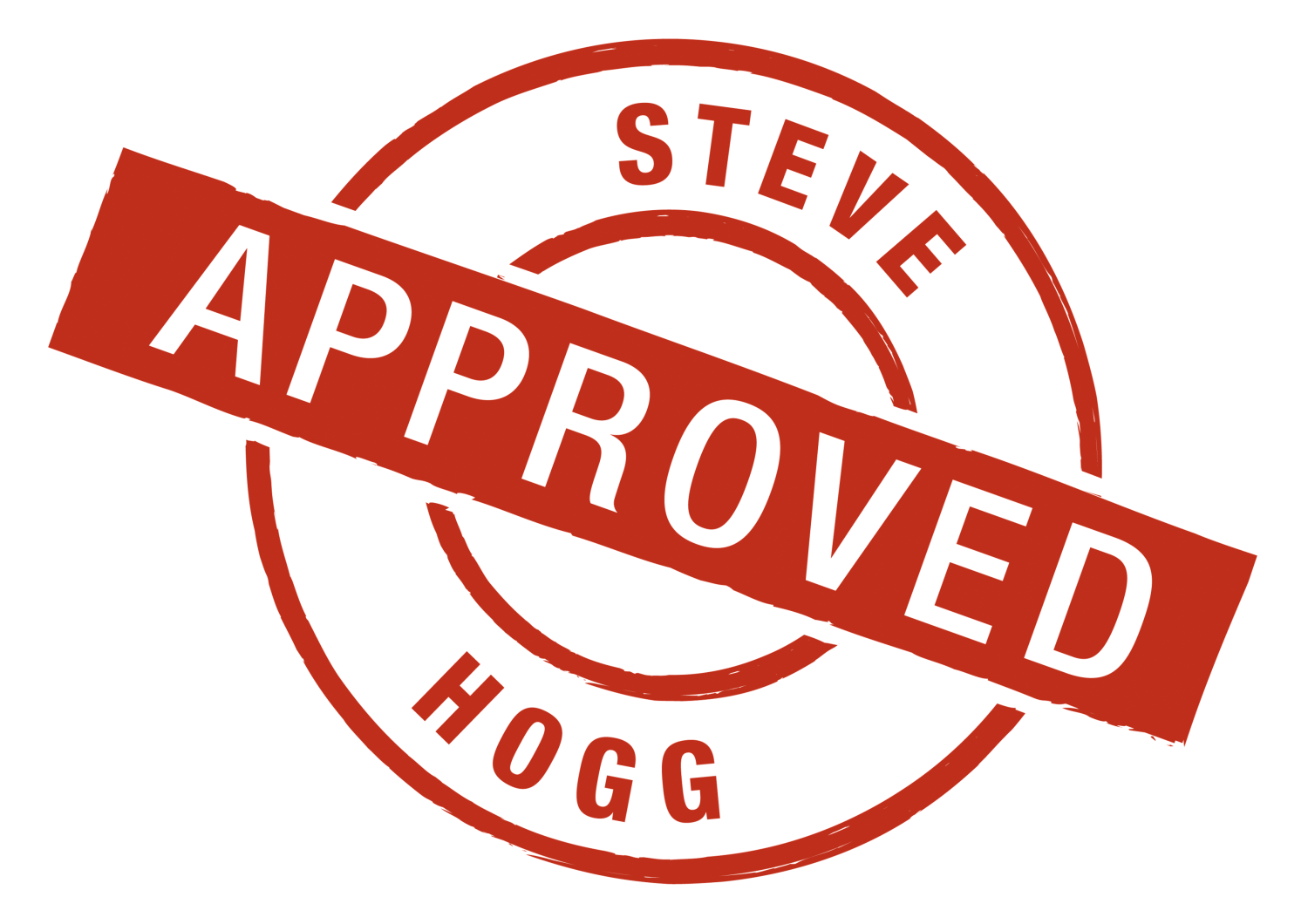

Another great post Steve. Now since you have broadened my vision to see that there are other bike fitters like you who follow a direct observation approach, I am wondering if you know of any closer my home(s). I’m in Japan, and in Toronto, Canada for a couple of weeks every year.
G’day Konstantin,I’m sorry, but I don’t know of anyone I can recommend in Japan or Toronto. There may be someone competent, but I’m not aware of them.
Steve, I know you said you rarely use valgus wedging, but under what circumstances have you used it? What was the person doing that lead you to
cant that way?
Thanks
G’day Markus,
If you’re a regular reader, you will have seen that I
have mentioned a number of times that I have developed a procedure to determine the degree of arch support and placement (heel, cleat, forefoot inside shoe) for any individual based on being able to quantify and prioritise proprioceptive feedback from the feet. This is IP that I don’t want to get into the detail of publicly because I am 2 years into the process of patenting the procedure and still probably have 4 years to go.
What I can say, is that I act on the testing procedure results and over several thousand clients since I nutted it out in its entirety, I would be able to count the number who have required valgus wedging on one hand. The key to understanding this is that if using an FFMD, rearfoot to forefoot alignment is being quantified STATICALLY without load. Often the functional picture changes dynamically with load applied. Almost all FFMD valgus readings, particularly if one foot only gives a valgus reading, are false readings. That is the reading is accurate, but FFMD readings have variable relevance to what type, placement and orientation of foot correction is needed under load on a bike. Of the handful of valgus wedging cases I have seen, at least one had a varus FFMD reading. I have also seen a couple who needed a varus rear foot wedge or wedges in conjunction with a valgus forefoot wedge and vice versa. This is not common at all, but it happens.
I use FFMD’s as an ‘early warning’ to detect lateral pelvic tilts in the
main. That is what it is best at in my view.
Howdy from Austin, Texas Steve.
Things are looking and feeling better as we finally had a bit of rain over the last few days. Speaking of feeling better, my right knee(the supposedly good one) was grumbling yesterday after 2 days of pacing the concrete floor at the Interbike show in Las Vagas. The updated Kit Laughlin book, “Overcome Neck & Back Pain,” provided some quick relief earlier this morning. Actually, it was going through a few of the activities with the DVD that did the trick. After a 15 minute trip around the neighborhood with the dog as a warm up, I popped in the DVD and had 25 minutes of fun.
The chair hip piriformis activity and the seated side bend on the floor (both felt quite challenging at first) did wonders for the right knee as the right quadratus lumborum and left piriformis were working overtime. I cannot stress how important it is to move the body into these seemingly easy positions while deep-breathing throuugh the activities. My knee feels awesome and I can tell there will probably be a bit of mild soreness from working the opposing muscles groups. Who though you could work up such a sweat while watching the television?
Cheers,
Jerry Gerlich
G’day Jerry,
I’m glad that the book / dvd helped. There’s some good stuff
in it as you know.
Steve, good article. I especially like the reinforcement that all the changes to a person’s fit won’t happen immediately. That’s why at my Studio, we include follow up visits for the first year in with the fitting cost. I’ve been a PT for almost 15 years and have been doing bike fits for over 10.
I guess I disagree in some sense with your note on indirect observation, but not terribly strenuously. I use the Retul system, but I frequently send people out the door outside the official “box”. And I do believe that a trained eye — and nothing but seeing thousands of people on the bike can train this — will pick up the intangibles that the infrared cannot.
The Retul, the way I use it, does provide a no-BS backup measurement or an objective verification or dissension of what I “think” I’m seeing. With all the funky ways I have seen pelvis rest on the bike, factoring in central dominance issues, and aberrant movement patterns, it’s nice to have that objective sounding board to test my assumptions.
I guess my point — some of the indirect observation technologies can be a great “policeman” to make sure we’re heading the right direction.
Thanks
John Weirath
G’day John,
I agree with you. I thought I summed it up okay “You are purchasing expertise, not tooling or branding and it is well to remember that if you want a good fitting experience. A quality bike fitter will use the tooling they prefer. It might be high tech; it might be low tech; it might be motion or video capture; it might be direct observation; it might be some or all of these things or something in between. What matters; all that matters, is the result”
Direct Observation only works as well as the skill level of the fitter. Indirect Observation only works as well as the skill of the fitter and their preparedness to depart from formula recommendations but has the additional buffer of providing a certain amount of info every time. You are using the Retul as a tool, not a decision maker. I know a couple of Retul fitters who I rate; in fact one, Greg Choat, is featured above. He uses his Retul much as you describe. From the sound of it, you are in the last category of Indirect Observation fitters that I mention; the ones who aren’t really. The problem as I mentioned, is that some buy indirect observation tooling and use it mainly for show while still applying formula joint angles and so on.
The thing that I would like to see Retul add is markers to the iliac crests or sacro iliac joints, either side of L1 and somewhere higher up, say the rear of the AC joint or similar. That would add info that I think is needed and which you work out by observation.
I take very detailed measurements of the finished position, even down to the dimensions of the seat, bars etc. If I’m ever cashed up enough, I’ll get a Retul just to use the Zin. It would save me 5 – 10 minutes with every fit measuring the finished position.
http://erikdalton.com/bad-bodies-or-bad-bike/
I am locate in New Jersey and I have been trying to find a qualified fitter for a number of years. Can you recommend anyone in the New York- New Jersey area? thanks.
G’day William,
I don’t know the U.S. bike fitting scene well at all.
There must be someone competent in that area but I don’t know about them. The closest to you that I can recommend is Timothy Gresh in Pennsylvania. If that isn’t too far, his contact details are in the article above.
Steve,
I just wanted to reach out to you to give you a testimonial on Mike Kohm. Its been about a month since Ive been fit, and have to say that he did a great job. I appreciate you recommending him to me. Without going into a long detailed story, I was especially impressed with his knowledge of diagnosing that I had an anterior rotated pelvis on the left side. It not only caused the legs to track in different planes, it also contributed to saddle soreness and an unstable pelvis. He adjusted the cleat pedal interface to reflect this and I have since been riding alot more powerfully and comfortably. For the longest time Ive tried making my own changes and just have not been able to put my finger on it. Mike Kohm was the answer. Thanks again.
G’day James,
thank you very much for passing that one. I have never met
Mike but when talking to him via email he came across as the real deal, hence my recommendation. I’m glad that it was borne out in person and also happy that you got a result for your trouble in seeking Mike out.